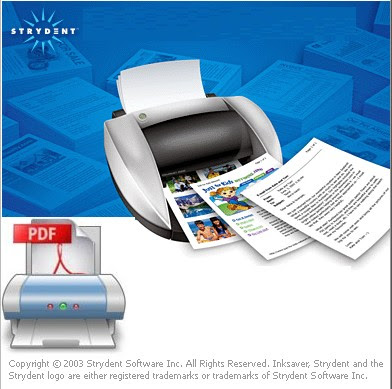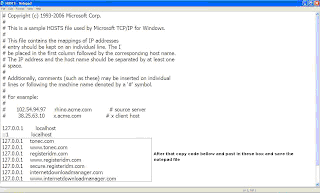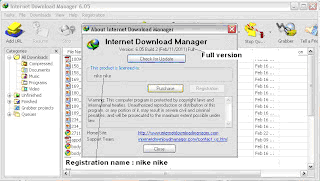1. Define Network?
A network is a set of devices connected by physical media links. A network is recursively is a connection of two or more nodes by a physical link or two or more networks connected by one or more nodes.
2. What is a Link?
At the lowest level, a network can consist of two or more computers directly connected by some physical medium such as coaxial cable or optical fiber. Such a physical medium is called as Link.
3. What is a node?
A network can consist of two or more computers directly connected by some physical medium such as coaxial cable or optical fiber. Such a physical medium is called as Links and the computer it connects is called as Nodes.
4. What is a gateway or Router?
A node that is connected to two or more networks is commonly called as router or Gateway. It generally forwards message from one network to another.
5. What is point-point link?
If the physical links are limited to a pair of nodes it is said to be point-point link.
6. What is Multiple Access?
If the physical links are shared by more than two nodes, it is said to be Multiple Access.
7. Name the factors that affect the performance of the network?
a. Number of Users
b. Type of transmission medium
c. Hardware
d. Software
b. Type of transmission medium
c. Hardware
d. Software
8. Name the factors that affect the reliability of the network?
a. Frequency of failure
b. Recovery time of a network after a failure
b. Recovery time of a network after a failure
9. Name the factors that affect the security of the network?
a. Unauthorized Access
b. Viruses
b. Viruses
10. What is Protocol?
A protocol is a set of rules that govern all aspects of information communication.
12. What is MAC address?
Class B - 128.0.0.0 - 191.255.255.255
Class C - 192.0.0.0 - 223.255.255.255
Class D - 224.0.0.0 - 239.255.255.255
Class E - 240.0.0.0 - 247.255.255.255
49. What is NETBIOS and NETBEUI?
NETBIOS is a programming interface that allows I/O requests to be sent to and received from a remote computer and it hides the networking hardware from applications.
NETBEUI is NetBIOS extended user interface. A transport protocol designed by microsoft and IBM for the use on small subnets.
11. Define Routing?
The process of determining systematically hoe to forward messages toward the destination nodes based on its address is called routing.
12. What is MAC address?
The address for a device as it is identified at the Media Access Control (MAC) layer in the network architecture. MAC address is usually stored in ROM on the network adapter card and is unique.
13. What is the difference between TFTP and FTP application layer protocols?
The Trivial File Transfer Protocol (TFTP) allows a local host to obtain files from a remote host but does not provide reliability or security. It uses the fundamental packet delivery services offered by UDP.
The File Transfer Protocol (FTP) is the standard mechanism provided by TCP / IP for copying a file from one host to another. It uses the services offer by TCP and so is reliable and secure. It establishes two connections (virtual circuits) between the hosts, one for data transfer and another for control information.
The File Transfer Protocol (FTP) is the standard mechanism provided by TCP / IP for copying a file from one host to another. It uses the services offer by TCP and so is reliable and secure. It establishes two connections (virtual circuits) between the hosts, one for data transfer and another for control information.
14. What are major types of networks and explain?
- Server-based network: provide centralized control of network resources and rely on server computers to provide security and network administration
- Peer-to-peer network: computers can act as both servers sharing resources and as clients using the resources.
15. What are the important topologies for networks?
- BUS topology: In this each computer is directly connected to primary network cable in a single line.
Advantages: Inexpensive, easy to install, simple to understand, easy to extend. - STAR topology: In this all computers are connected using a central hub.
Advantages: Can be inexpensive, easy to install and reconfigure and easy to trouble shoot physical problems. - RING topology: In this all computers are connected in loop. Advantages: All computers have equal access to network media, installation can be simple, and signal does not degrade as much as in other topologies because each computer regenerates it.
16. What is mesh network?
A network in which there are multiple network links between computers to provide multiple paths for data to travel.
17. What is difference between baseband and broadband transmission?
In a baseband transmission, the entire bandwidth of the cable is consumed by a single signal. In broadband transmission, signals are sent on multiple frequencies, allowing multiple signals to be sent simultaneously.
18. Explain 5-4-3 rule?
In a Ethernet network, between any two points on the network ,there can be no more than five network segments or four repeaters, and of those five segments only three of segments can be populated.
19. What is multicast routing?
Sending a message to a group is called multicasting, and its routing algorithm is called multicast routing.
20.What is Proxy ARP?
It is using a router to answer ARP requests. This will be done when the originating host believes that a destination is local, when in fact is lies beyond router.
21. What is SLIP (Serial Line Interface Protocol)?
It is a very simple protocol used for transmission of IP datagrams across a serial line.
22. What is RIP (Routing Information Protocol)?
It is a simple protocol used to exchange information between the routers.
23. What is source route?
It is a sequence of IP addresses identifying the route a datagram must follow. A source route may optionally be included in an IP datagram header.
24. What is BGP (Border Gateway Protocol)?
It is a protocol used to advertise the set of networks that can be reached with in an autonomous system. BGP enables this information to be shared with the autonomous system. This is newer than EGP (Exterior Gateway Protocol).
25. What is Gateway-to-Gateway protocol?
It is a protocol formerly used to exchange routing information between Internet core routers.
26. What is NVT (Network Virtual Terminal)?
It is a set of rules defining a very simple virtual terminal interaction. The NVT is used in the start of a Telnet session.
27. What is a Multi-homed Host?
It is a host that has a multiple network interfaces and that requires multiple IP addresses is called as a Multi-homed Host.
28. What is Kerberos?
It is an authentication service developed at the Massachusetts Institute of Technology. Kerberos uses encryption to prevent intruders from discovering passwords and gaining unauthorized access to files.
29. What is OSPF?
It is an Internet routing protocol that scales well, can route traffic along multiple paths, and uses knowledge of an Internet's topology to make accurate routing decisions.
30. Expand IDEA.
IDEA stands for International Data Encryption Algorithm.
31. What is wide-mouth frog?
Wide-mouth frog is the simplest known key distribution center (KDC) authentication protocol.
33. What is Mail Gateway?
It is a system that performs a protocol translation between different electronic mail delivery protocols.
34. What is IGP (Interior Gateway Protocol)?
It is any routing protocol used within an autonomous system.
35. What is EGP (Exterior Gateway Protocol)?
It is the protocol the routers in neighboring autonomous systems use to identify the set of networks that can be reached within or via each autonomous system.
36. What is autonomous system?
It is a collection of routers under the control of a single administrative authority and that uses a common Interior Gateway Protocol.
37. What are the different type of networking / internetworking devices?
- Repeater: Also called a regenerator, it is an electronic device that operates only at physical layer. It receives the signal in the network before it becomes weak, regenerates the original bit pattern and puts the refreshed copy back in to the link.
- Bridges: These operate both in the physical and data link layers of LANs of same type. They divide a larger network in to smaller segments. They contain logic that allow them to keep the traffic for each segment separate and thus are repeaters that relay a frame only the side of the segment containing the intended recipent and control congestion.
- Routers: They relay packets among multiple interconnected networks (i.e. LANs of different type). They operate in the physical, data link and network layers. They contain software that enable them to determine which of the several possible paths is the best for a particular transmission.
- Gateways: They relay packets among networks that have different protocols (e.g. between a LAN and a WAN). They accept a packet formatted for one protocol and convert it to a packet formatted for another protocol before forwarding it. They operate in all seven layers of the OSI model.
38. What is ICMP?
ICMP is Internet Control Message Protocol, a network layer protocol of the TCP/IP suite used by hosts and gateways to send notification of datagram problems back to the sender. It uses the echo test / reply to test whether a destination is reachable and responding. It also handles both control and error messages.
39. What are the data units at different layers of the TCP / IP protocol suite?
The data unit created at the application layer is called a message, at the transport layer the data unit created is called either a segment or an user datagram, at the network layer the data unit created is called the datagram, at the data link layer the datagram is encapsulated in to a frame and finally transmitted as signals along the transmission media.
40. What is difference between ARP and RARP?
The address resolution protocol (ARP) is used to associate the 32 bit IP address with the 48 bit physical address, used by a host or a router to find the physical address of another host on its network by sending a ARP query packet that includes the IP address of the receiver.
The reverse address resolution protocol (RARP) allows a host to discover its Internet address when it knows only its physical address
.
The reverse address resolution protocol (RARP) allows a host to discover its Internet address when it knows only its physical address
.
41. What is the minimum and maximum length of the header in the TCP segment and IP datagram?
The header should have a minimum length of 20 bytes and can have a maximum length of 60 bytes.
42. What is the range of addresses in the classes of internet addresses?
Class A - 0.0.0.0 - 127.255.255.255Class B - 128.0.0.0 - 191.255.255.255
Class C - 192.0.0.0 - 223.255.255.255
Class D - 224.0.0.0 - 239.255.255.255
Class E - 240.0.0.0 - 247.255.255.255
43. What is passive topology?
When the computers on the network simply listen and receive the signal, they are referred to as passive because they don't amplify the signal in any way. Example for passive topology -linear bus.
44. What is Brouter?
Hybrid devices that combine the features of both bridges and routers.
45. What is cladding?
A layer of a glass surrounding the center fiber of glass inside a fiber-optic cable.
46. What is point-to-point protocol?
A communications protocol used to connect computers to remote networking services including Internet service providers.
47. How Gateway is different from Routers?
A gateway operates at the upper levels of the OSI model and translates information between two completely different network architectures or data formats.
48. What is attenuation?
The degeneration of a signal over distance on a network cable is called attenuation.
49. What is NETBIOS and NETBEUI?
NETBIOS is a programming interface that allows I/O requests to be sent to and received from a remote computer and it hides the networking hardware from applications.
NETBEUI is NetBIOS extended user interface. A transport protocol designed by microsoft and IBM for the use on small subnets.















